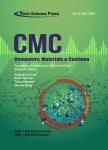Human Gait Recognition Based on Sequential Deep Learning and Best Features Selection
作者机构:Department of Electrical EngineeringHITEC UniversityTaxilaPakistan Department of Computer ScienceHITEC UniversityTaxilaPakistan College of Computer Engineering and SciencePrince Sattam Bin Abdulaziz UniversityAl-Kharaj11942Saudi Arabia Department of Computer ScienceHanyang UniversitySeoul04763Korea
出 版 物:《Computers, Materials & Continua》 (计算机、材料和连续体(英文))
年 卷 期:2023年第75卷第6期
页 面:5123-5140页
核心收录:
学科分类:0710[理学-生物学] 0831[工学-生物医学工程(可授工学、理学、医学学位)] 08[工学] 0812[工学-计算机科学与技术(可授工学、理学学位)]
基 金:supported by“Human Resources Program in Energy Technology”of the Korea Institute of Energy Technology Evaluation and Planning(KETEP) granted financial resources from the Ministry of Trade,Industry&Energy,Republic of Korea.(No.20204010600090).
主 题:Human gait recognition optical flow deep learning features fusion feature selection
摘 要:Gait recognition is an active research area that uses a walking theme to identify the subject correctly.Human Gait Recognition(HGR)is performed without any cooperation from the individual.However,in practice,it remains a challenging task under diverse walking sequences due to the covariant factors such as normal walking and walking with wearing a coat.Researchers,over the years,have worked on successfully identifying subjects using different techniques,but there is still room for improvement in accuracy due to these covariant factors.This paper proposes an automated model-free framework for human gait recognition in this article.There are a few critical steps in the proposed method.Firstly,optical flow-based motion region esti-mation and dynamic coordinates-based cropping are performed.The second step involves training a fine-tuned pre-trained MobileNetV2 model on both original and optical flow cropped frames;the training has been conducted using static hyperparameters.The third step proposed a fusion technique known as normal distribution serially fusion.In the fourth step,a better optimization algorithm is applied to select the best features,which are then classified using a Bi-Layered neural network.Three publicly available datasets,CASIA A,CASIA B,and CASIA C,were used in the experimental process and obtained average accuracies of 99.6%,91.6%,and 95.02%,respectively.The proposed framework has achieved improved accuracy compared to the other methods.



